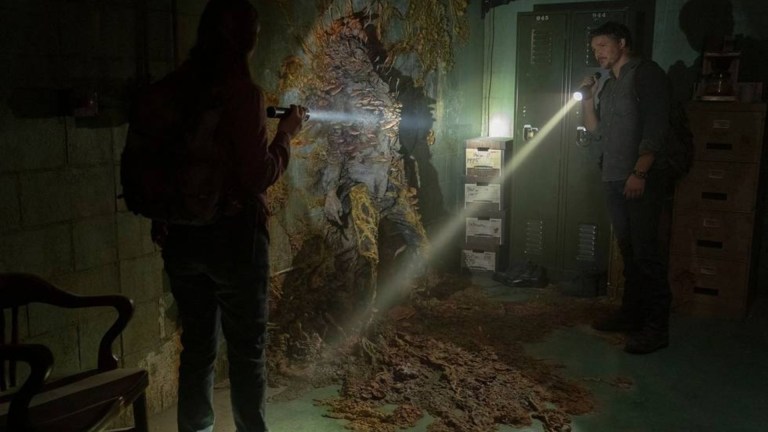How The Last of Us Series Will Change the Cordyceps Infection
Co-creators for HBO's The Last of Us reveal how the zombie-creating Cordyceps infection from the game evolved for the series.

The events of The Last of Us video game series are triggered by an outbreak of a parasitic fungal infection that transforms people into zombie-like creatures. In the real world, the Cordyceps fungus typically only infects insects like ants, but in the world of The Last of Us, this fungus has mutated to infect human hosts as well, causing an incurable brain infection.
Thanks to a newspaper you can find in the prologue of The Last of Us, we know that, in the game, the outbreak was primarily caused by crops contaminated with the fungus. People ate food with enough traces of Cordyceps to become infected, and then essentially lost their minds to the fungus. But consuming Cordyceps isn’t the only source of infection. As is typical in most zombie lore, a bite can pass along the infection, but so can inhaling Cordyceps spores in enclosed spaces.
You see, the goal of this fungus is to spread itself as much as possible no matter what. Real-world Cordyceps will infect ants, control their motor functions, and compel them to go off and die so that the fungus can use their decaying corpse as fuel to grow and eject more of its spores into the air to continue the cycle. As players explore the world of The Last of Us, they come across rooms filled with spores and decaying bodies that have succumbed to the infection. In the game, gas masks are used to move through these areas without becoming infected, but it seems as though the upcoming HBO series may be changing how the Cordyceps infection works.
While the trailers have revealed that late stages of infection like Clickers and Bloaters are very much still a part of this world in the show, series co-creator and video game creative director Neil Druckmann recently told Collider that he and Craig Mazin wanted to do something to make the Runners (the first stage of Cordyceps infection) stand out from other humanoid zombies saying “But with the more recently infected, we had a lot of conversation about what that vector could look like because there are certain things from the game that we took away. The game had spores in the air and people had to wear gas masks, and we decided, early on, that we didn’t wanna do that for the show.”
But just because the series co-creators have decided to forego the gas masks and spores doesn’t mean that they’re totally abandoning the fungal roots of the outbreak. In the same interview, Druckmann explains that those infected with Cordyceps in the series will maintain a sort of mycelial connection with each other, saying “Eventually, those conversations led us to these tendrils. And then, just thinking about how there’s a passage that happens from one infected to another, and like fungus does, it could become a network that is interconnected. It became very scary to think that they’re all working against us in this unified way, which was a concept that I really liked, that got developed in the show.”
Even though it may seem like removing the possibility of infection through airborne contact with spores lowers the stakes, introducing the potential for the infected to become a sort of hive-mind is honestly a lot more terrifying.
On their own, the various stages of infected are formidable opponents. Runners are the most human-like and the earliest stage of infection. Their speed and ability to still see make them hard to hide from or shake off. Stalkers are the next stage, characterized by fungal growths that begin to sprout from their head and their ability to stalk prey with primitive echolocation. After about a year, infected will become Clickers with the fungal growths completely obscuring their vision leaving them to rely solely on echolocation to find prey. These growths also create a sort of armor, making them tougher to kill. After years of infection, Clickers can become Bloaters, which are enormous monstrosities covered in hardened fungal plating with the ability to throw toxic clouds of spores.
Now imagine all of these creatures somehow communicating with each other, even if it’s just across a smaller area like an abandoned office building or town square. Just thinking about it has me questioning whether trying to survive this post-apocalyptic hellscape is even worth it. The evolution of the Cordyceps infection in The Last of Us is truly fascinating, and it will be interesting to see how this change affects Joel (Pedro Pascal) and Ellie’s (Bella Ramsey) journey in the series.
The Last of Us premieres Sunday, Jan. 15 at 9 p.m. ET on HBO.
